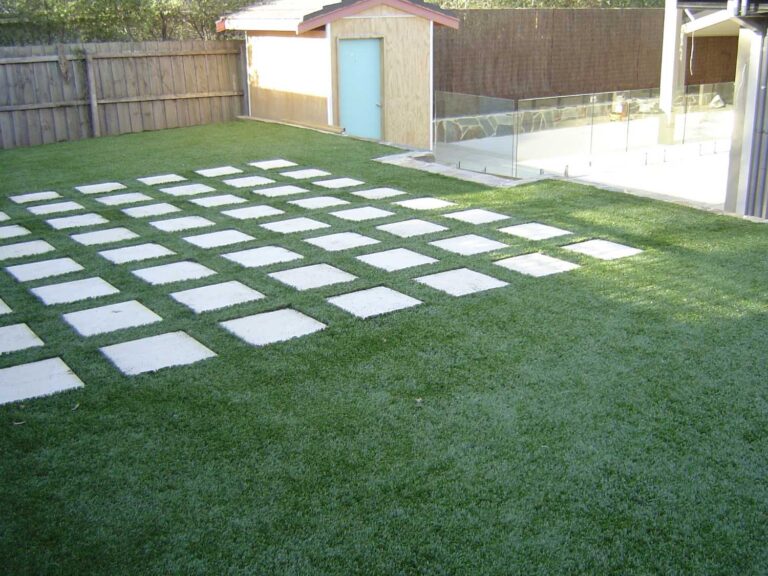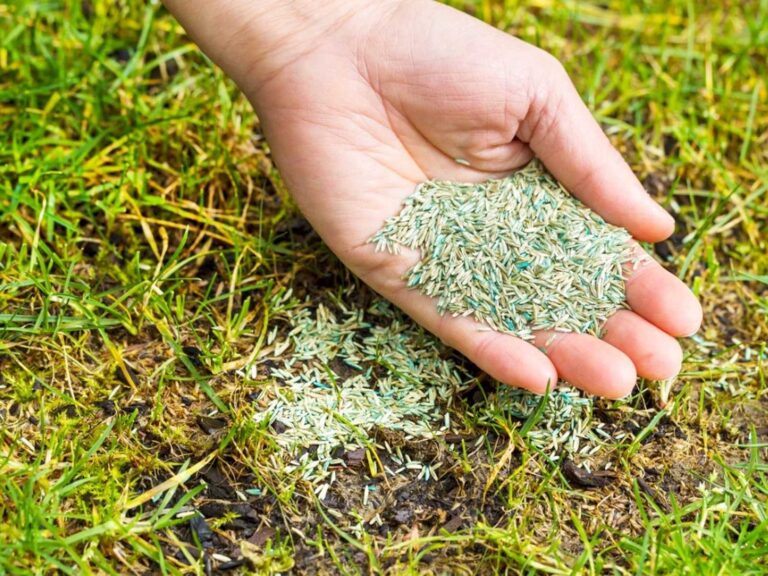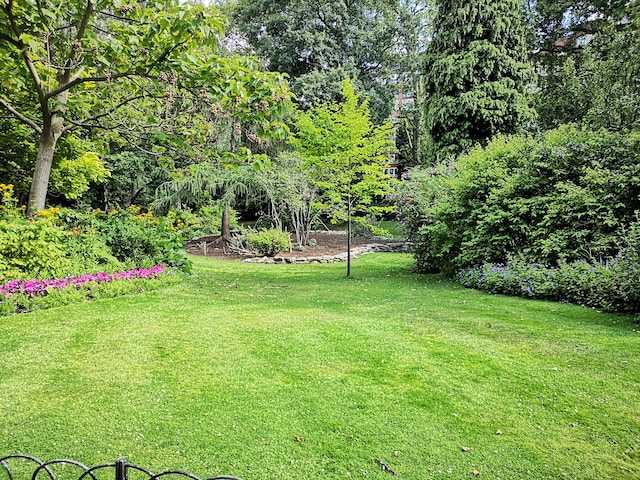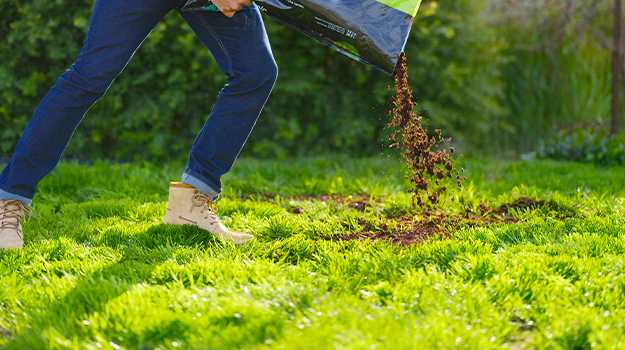20 Captivating Trees With Heart Shaped Leaves
Nature has a way of leaving us awe-struck with its wonders, from majestic mountains to delicate flowers. Among its many marvels, trees adorned with heart-shaped leaves stand out as subtle yet enchanting symbols of love and beauty. A tree with heart shaped leaves is not only captivating but also contributes to the ecological balance of our environment. Below are 20 of the most enchanting trees with heart-shaped leaves:
1. Eastern Redbud (Cercis canadensis)
The Eastern Redbud tree is celebrated for its dainty heart-shaped leaves and delicate pink blossoms that adorn its branches in spring. It is a true harbinger of love in nature. The Eastern Redbud (Cercis canadensis) is a captivating tree renowned for its vibrant spring blossoms and distinctive heart-shaped leaves.
Tree Size: Eastern Redbuds are typically small to medium-sized trees, growing to heights of 20 to 30 feet. They have a rounded to irregular canopy with a similar spread, making them ideal for gardens and small landscapes. Their heart-shaped leaves are a delightful feature.
Planting Zones: Eastern Redbuds are versatile and thrive in USDA hardiness zones 4 to 9. This tree with heart shaped leaves thrives in warmer subtropical zones and cooler temperate regions.
Soil Type: Consider planting Eastern Redbuds in loamy soils with a pH ranging between 6.0 and 7.0. However, you can also grow it in other soils as long as you maintain good drainage.
Tree Care: To care for Eastern Redbuds, plant them in a sunny to partially shaded location with well-drained soil. Regular watering, especially during dry spells or in their early years, is essential. Pruning should be minimal, primarily to remove dead or crowded branches. Applying a layer of mulch around the base helps conserve moisture and regulate soil temperature. Eastern Redbuds generally do not require heavy fertilization, but a balanced, slow-release fertilizer in spring can support healthy growth and vibrant spring blossoms. These trees are cherished for their ornamental value and are a stunning addition to any landscape.
2. Linden (Tilia cordata)
The Linden tree, also known as the Little-leaf Linden, boasts heart-shaped leaves that emit a sweet fragrance when crushed. It is a popular choice for urban landscapes. Linden, scientifically known as Tilia cordata, is a beloved tree admired for its graceful stature and fragrant, heart-shaped leaves.
Tree Size: Linden trees vary in size, typically reaching heights of 50 to 80 feet, though some specimens can grow even taller. They have a rounded canopy that can span up to 40 to 60 feet, providing ample shade.
Planting Zones: Linden trees are commonly found in USDA hardiness zones 3 to 7, making them suitable for a wide range of temperate regions. They tolerate both cold winters and warm summers.
Soil Type: Like Eastern Redbuds, Linden trees prefer properly draining, loamy soils with a slightly acidic to alkaline pH level between 6.0 and 7.5. Despite that, they are also adaptable to other soil types, including clay and sandy soils.
Tree Care: Plant your Linden trees in a sunny to partially shaded location with well-drained soil. Regular watering is essential, particularly during dry periods or in the tree’s early years. Prune occasionally to maintain shape and remove dead or crowded branches. Mulching around the base helps conserve moisture and regulate soil temperature. While they don’t require heavy fertilization, providing a balanced, slow-release fertilizer in spring can promote healthy growth.
3. Silver Linden (Tilia tomentosa)
Similar to the Linden, the Silver Linden features heart-shaped leaves with a silver underside, adding a touch of elegance to any setting.
Tree Size: Silver Linden (Tilia tomentosa) is a medium to large deciduous tree with an impressive stature, typically reaching heights between 50 to 70 feet. Its canopy spans approximately 30 to 50 feet in width. This elegant tree is known for its picturesque silhouette.
Planting Zones: As a versatile tree with heart shaped leaves, Silver Linden thrives in diverse climates, making it a perfect choice for planting in USDA hardiness zones 4 to 7 in the United States. Therefore, this tree is suitable for both urban and suburban landscaping projects.
Soil Type: Regarding soil type, the Silver Linden is highly adaptable. Even though it prefers well draining soils, it can tolerate other soil compositions, including clay, loam, and sandy soils. Maintaining a slightly acidic to slightly alkaline soil with a pH range of 6.0 to 7.5 is ideal for promoting its optimal growth.
Tree Care: Caring for the Silver Linden involves planting it in a sunny location with well-drained soil, ensuring sufficient watering during its early years, minimal pruning to maintain its natural shape and occasional fertilizing. This low-maintenance tree is relatively resistant to pests and diseases, making it a valuable addition to any landscape.
4. Japanese Maple (Acer palmatum)
Renowned for its striking red foliage in the fall, the Japanese Maple’s leaves are heart-shaped and delicate, making it a beloved ornamental tree. The Japanese Maple (Acer palmatum) is a stunning ornamental tree cherished for its delicate foliage and graceful appearance.
Tree Size: Japanese Maples generally fall within the small to medium-sized tree category, typically reaching heights of 10 to 25 feet. Their graceful, compact shape renders them perfect choices for gardens, patios, and more intimate outdoor settings.
Planting Zones: Japanese Maples thrive in planting zones 5 to 8, although specific varieties may have varying zone preferences. These trees with heart-shaped leaves are typically suited for temperate climates with mild winters and moderate summers.
Soil Type: Regarding soil preferences, they thrive in well-draining soil with an optimal pH range falling between 5.5 and 6.5. Organic-rich, loamy soils work best for their growth. Ensure good soil drainage to prevent root rot.
Tree Care: Japanese Maples require some care to thrive. Plant them in a location with dappled or partial shade, as they are sensitive to harsh sunlight. Regular watering, especially during dry spells, is essential. Prune to shape the tree and remove dead or damaged branches in late winter or early spring.
5. Cercidiphyllum japonicum (Katsura Tree)
The Cercidiphyllum japonicum, commonly known as the Katsura Tree, is a captivating ornamental tree with enchanting heart-shaped leaves valued for its unique characteristics and beautiful presence in gardens and landscapes. The Katsura Tree exhibits heart-shaped leaves that change color in the fall, producing a sweet, cotton candy-like scent.
Tree Size: This is a medium to large deciduous tree that typically reaches heights between 40 to 60 feet, with a similar canopy spread. It showcases a symmetrical, pyramidal shape when young, gradually maturing into a more rounded crown.
Planting Zones: Katsura Trees are well-suited for planting in USDA hardiness zones 4 to 8. They flourish in areas characterized by moderate temperatures, displaying adaptability to a diverse array of climates.
Tree Care: To ensure the health and vitality of Katsura Trees, plant them in a location with full to partial sunlight. Regular watering, especially during dry spells, is essential during their early years. Prune to remove dead or crowded branches in late winter or early spring.
6. Sweetheart Tree (Halesia diptera)
The Sweetheart Tree, scientifically known as Halesia diptera, is a charming and relatively petite tree that enchants with its delicate appearance. This tree is aptly named, with white, pendulous flowers resembling hearts and heart-shaped leaves that adorn it during the spring. Sweetheart Trees are generally low-maintenance, adding a touch of romantic beauty to gardens and landscapes.
Tree Size: Sweetheart Trees are typically small to medium-sized, reaching heights of 15 to 30 feet at maturity. Their canopy has a gracefully rounded shape, adorned with clusters of pendulous, bell-shaped flowers that resemble hearts, hence their endearing common name.
Tree Care: To care for Sweetheart Trees, plant them in a location with partial to full sunlight. Regular watering, especially during dry spells or in the initial establishment phase, is crucial. Prune sparingly, mainly to shape the tree or remove dead or damaged branches.
7. Love Trees (Philenoptera violacea)
Love Trees, scientifically known as Philenoptera violacea, are enchanting and symbolic trees celebrated for their role in African folklore and their striking appearance. Found in Africa, these trees are cherished for their heart-shaped leaflets and the cultural significance they hold.
Indigenous to diverse parts of Africa, such as South Africa and Zimbabwe, these trees excel in tropical and subtropical climates and flourish within zones 9 to 11. These symbolic trees with heart-shaped leaves serve as reminders of love and harmony in African cultures and add a touch of cultural significance to landscapes.
Tree Size: Love Trees are medium-sized, deciduous trees that typically grow to heights of 20 to 40 feet. They have a spreading canopy with elegant, heart-shaped leaves that are glossy and deep green, adding to their aesthetic appeal.
Tree Care: Caring for Love Trees involves planting them in a sunny to partially shaded location and ensuring consistent watering during their establishment period.
8. Hoya Kerrii (Sweetheart Plant)
Hoya Kerrii, affectionately known as the Sweetheart Plant or Valentine Hoya, is a delightful and unique succulent that is cherished for its heart-shaped leaves and ease of care. While not a tree, this heart-shaped succulent is a favorite among plant enthusiasts, symbolizing everlasting love. Hoya Kerrii is a small to medium-sized succulent that typically reaches a height of 8 to 12 inches. Its charming heart-shaped leaves make it a popular choice for indoor and container gardening.
Sweetheart Plants thrive indoors or in controlled environments, making them suitable for cultivation in a wide range of locations, regardless of climate zones. Plant Hoya Kerrii in well-draining potting mixtures designed for succulents and cacti. These plants prefer soil that allows excess water to escape, preventing root rot. A mix of potting soil, perlite, and coarse sand works well.
Tree Care: Sweetheart Plants are relatively low-maintenance. They thrive in bright, indirect sunlight but can tolerate some shade. Allow the soil to dry out between waterings, as they are susceptible to overwatering. Pruning is minimal and primarily done to shape the plant or remove any dead or yellowing leaves. Fertilize with a balanced, diluted liquid fertilizer during the growing season (spring to summer).
9. Catalpa (Catalpa bignonioides)
Catalpa, scientifically known as Catalpa bignonioides, is a magnificent tree known for its large heart-shaped leaves and striking presence. The Catalpa tree’s large heart-shaped leaves are striking and provide shade during the hot summer months.
Catalpa trees commonly fall into the medium to large category, boasting heights ranging from 40 to 70 feet and displaying a canopy spanning approximately 20 to 40 feet in width. These trees are characterized by their unique heart-shaped leaves, reaching impressive lengths of up to 8 inches, further enhancing their overall grand and majestic appearance.
Additionally, Catalpa trees are known for their ability to grow in wet or poorly drained areas, making them suitable for various landscape conditions.
Tree Care: To care for Catalpa trees, plant them in a sunny location with well-drained soil. They require regular watering, especially during dry periods or in the first few years after planting. Pruning is generally minimal and may involve removing dead or crowded branches. Mulching around the base helps conserve moisture and regulate soil temperature.
10. Yellowwood (Cladrastis kentukea)
Yellowwood (Cladrastis kentukea) is a beautiful and relatively small to medium-sized tree with heart shaped leaves and stunning cascades of fragrant white flowers. With their vibrant springtime display of fragrant white blossoms, Yellowwood trees are a striking addition to any landscape.
Yellowwood typically reaches heights between 30 to 50 feet at maturity with a canopy spread of 30 to 50 feet. It is a deciduous tree that showcases a rounded or irregular shape, providing excellent shade and an elegant presence in gardens and landscapes. These trees prefer well-draining, loamy soils with slightly acidic to neutral soil conditions.
Tree Care: To care for Yellowwood trees, plant them in a sunny to partially shaded location with well-drained soil. They require regular watering during the initial establishment phase, but once established, they are relatively drought-tolerant.
11. White Fringetree (Chionanthus virginicus)
The White Fringetree (Chionanthus virginicus) is a captivating native tree celebrated for its elegant, cascading clusters of fragrant white flowers and graceful form. With its elegant white flowers and heart-shaped leaves, the White Fringetree adds a touch of romance to gardens.
White Fringetrees are small to medium-sized trees, typically reaching heights of 12 to 20 feet and featuring a similar canopy spread. Their natural shape is rounded to irregular, adding to their aesthetic appeal.
12. Himalayan Sweetheart Plant (Dicentra formosa)
The Himalayan Sweetheart Plant is a delightful perennial herbaceous plant known for its graceful, fern-like foliage and distinctive heart-shaped flowers that dangle like tiny love tokens.
Himalayan Sweetheart Plants are relatively small, typically growing to heights of 12 to 18 inches. They feature finely divided, fern-like leaves that add a delicate touch to garden beds.
Plant this tree with heart shaped leaves in a partial to full shade location for protection from harsh sunlight. Ensure regular watering and maintain the soil consistently moist but not waterlogged.
13. Eucalyptus
Boasting a towering height and striking heart-shaped leaves, Eucalyptus is a remarkable tree indigenous to the southeastern regions of Australia.
Eucalyptus regnans stands as one of the tallest tree species globally, often reaching astonishing heights of 330 to 400 feet. Its massive size, straight trunk, and towering canopy make it a natural wonder. Its leaves are lance-shaped and aromatic.
To care for Eucalyptus regnans, plant them in a location with full sunlight and ample space to accommodate their immense size. These trees require regular watering during their establishment phase but become more drought-tolerant as they mature.
14. Black Tupelo (Nyssa sylvatica)
Also known as the Black Gum tree, the Black Tupelo is a remarkable native tree celebrated for its vibrant fall heart-shaped leaves in shades of red, orange, and purple.
Black Tupelo trees exhibit varying sizes, spanning from small to medium dimensions. They commonly attain heights of up to 30 to 50 feet and a canopy extending approximately 20 to 30 feet in width. During the autumn season, their deciduous foliage undergoes a breathtaking transformation, showcasing vibrant hues of red, orange, and purple. These trees with heart-shaped leaves thrive in moist soil conditions. However, they showcase a remarkable adaptability to a diverse range of soil types, encompassing clay, loam, and sandy soils.
15. Serviceberry (Amelanchier)
Serviceberry trees are cherished for their dainty white blossoms and heart-shaped leaves, attracting pollinators and birds. Serviceberries, belonging to the genus Amelanchier, are appreciated for their attractive blooms, edible berries, and adaptability.
Serviceberries typically grow to heights ranging from 15 to 25 feet, with a comparable canopy spread. They often take on a multi-stemmed growth form and feature ovate leaves, adding to their aesthetic charm.
16. Yellow Poplar (Liriodendron tulipifera)
The Yellow Poplar is another popular tree with heart shaped leaves known for its striking yellow-green tulip-shaped flowers. Yellow Poplars are typically large trees that can soar to impressive heights of 70 to 90 feet or even more. Their broad canopy forms an oval to pyramidal shape, making them a prominent presence in the landscape. While Yellow Poplars have a preference for well-drained, loamy soils, they can tolerate other soil types.
17. Northern Catalpa (Catalpa speciosa)
The Northern Catalpa boasts large heart-shaped leaves and clusters of white, orchid-like flowers. The Northern Catalpa, scientifically known as Catalpa speciosa, is a distinctive and hardy tree cherished for its unique foliage, showy flowers, and rapid growth.
Northern Catalpa trees are typically medium to large, reaching heights ranging from 40 to 70 feet with a canopy spread of 20 to 40 feet. Their broad, irregular shape and large, heart-shaped leaves contribute to their ornamental appeal. This tree with heart shaped leaves is well-suited for regions with cold winters and warm summers and prefers moderately fertile soils.
18. Magnolia (Magnolia spp.)
Magnolias feature large, glossy, heart-shaped leaves and fragrant, majestic flowers. These heart-shaped leaf trees exhibit a range of sizes, with certain species remaining compact to medium-sized trees, achieving heights of 20 to 40 feet, while others can attain impressive heights of up to 80 feet. They feature pyramidal and rounded canopies, depending on the specific species. Magnolias are adaptable to a diverse range of climates and thrive in soils with a pH range between 6.0 and 7.0.
19. Western Redbud (Cercis occidentalis)
Like the Eastern Redbud, the Western Redbud is another captivating tree with heart shaped leaves and adorned with delicate pink or lavender flowers. Western Redbuds generally fall within the small to medium-sized tree category, typically attaining heights ranging from 6 to 20 feet while sporting a similar canopy spread. These trees are exceptionally well-suited for temperate climates and are frequently encountered in the western regions of the United States. Much like their heart-shaped leaf counterparts, Western Redbuds exhibit remarkable adaptability to soil conditions, thriving in environments with slightly acidic to slightly alkaline pH levels.
20. European Wild Pear (Pyrus pyraster)
The European Wild Pear’s heart-shaped leaves are complemented by clusters of delicate white flowers and small pears. European Wild Pears typically range from small to medium-sized trees, reaching heights between 20 to 40 feet, with a comparable canopy spread. These trees thrive in various climates and adapt to temperate regions with cold winters and warm summers.
The Bottom Line
Trees with heart-shaped leaves stand out as symbols of nature’s love notes. From the Eastern Redbud’s stunning blossoms to the legend-rich Judas Tree, the elegant Chinese Redbud, and the ecological powerhouse of the Catalpa, these trees captivate us with their unique beauty, cultural significance, and ecological contributions.






